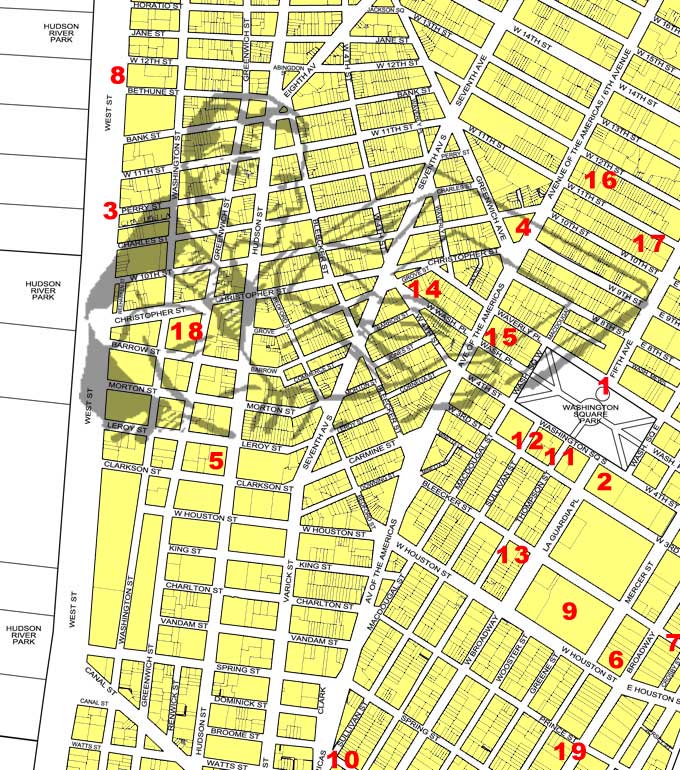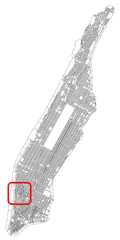|
|
Architects:
The above map illustrates the abundance of famous architects throughout the last several centuries that have completed buildings within Greenwich Village and SoHo. The architects listed below, and indicated by a number near the building they completed on the map above, are from the great pantheon of architects that have helped create the unique feel of this constantly changing yet historical area. The red line is a suggested walking tour to experience the immense body of work of these great architects.
|
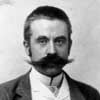 |
1. Stanford White / The Washington Arch, Stanford White of McKim, Mead & White, 1889-1895
Washington Square Park at the foot of Fifth Avenue
Stanford White (November 9, 1853 - June 25, 1906) an American architect and partner in the architectural firm of McKim, Mead, and White, the frontrunner among Beaux-Arts firms. He designed a long series of houses for the rich and the very rich, and various public, institutional, and religious buildings. His design principles embodied the "American Renaissance". In 1906 White was murdered by millionaire Harry K. Thaw over White's love affair with Evelyn Nesbit, Thaw's wife , leading to a widely-reported trial.
|
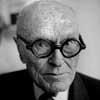 |
2. Philip Johnson / Elmer Holmes Bobst Library, Philip Johnson and Richard Foster, 1972.
70 Washington Square South, between West Broadway and Washington Square East, South Side.
Philip Cortelyou Johnson (July 8, 1906 - January 25, 2005) was one of the most influential American architects. With his thick, round-framed glasses, Johnson was the most recognizable figure in American architecture for decades. In 1930, he founded the Department of Architecture and Design at MoMA and later (1978), as a trustee, he was awarded an American Institute of Architects Gold Medal and the first Pritzker Architecture Prize, in 1979. He is considered the father of Modern Movement in Architecture.
|
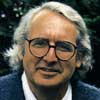 |
3. Richard Meier / Perry Street Buildings, Richard Meier and Partners, 2005
173 and 176 Perry Street, at the intersection of West Street.
Richard Meier (born October 12, 1934 in Newark, New Jersey) is a American architect known for his rationalist designs and the use of the color white. Richard Meier earned a Bachelor of Architecture degree from Cornell University in 1957, worked for Skidmore, Owings and Merrill briefly in 1959, and then for Marcel Breuer for three years, prior to starting his own practice in New York in 1963. His Perry Street buildings started the concept of hiring "star" architects for residential condominium buildings.
|
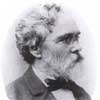 |
4. Calvert Vaux / Jefferson Market, Vaux & Withers, 1874-1877.
425 Sixth Avenue, Southwest corner of West 10th Street
Calvert Vaux (December 20, 1824 - November 19, 1895), was an architect and landscape designer. Although he has numerous credits to his own name, he is best remembered as the co-designer (with Frederick Law Olmsted), of New York's Central Park.
|
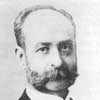 |
5. Rafael Guastavino / Printing House, Renwick, Aspinwall & Tucker, 1911 (Entry Ceiling: Guastavino)
31-35 Clarkson Street at Leroy and Hudson Streets
Guastavino was the creator of a vaulting system that added to a large number of architecturally important and famous buildings, which derive much of their beauty from his unique vaulting. But fame did not come to him because he served as a contractor, not the principal architect, of these projects. He came to New York City from Barcelona in 1881 at the age of 40, in Spain he'd been an accomplished architect trained in Barcelona and a contemporary of Antoni Gaudi.
|
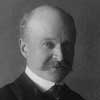 |
6. Charles Follen McKim / The Cable Building, McKim, Mead and White, 1892-1894.
611 Broadway, NW Corner of Houston Street
Charles Follen McKim (August 24, 1847 - September 14, 1909) was one of the most prominent American Beaux-Arts architects of the late nineteenth century. He was born in Chester County, Pennsylvania, August 24, 1847. Along with Stanford White, he provided the architectural expertise as a member of the partnership McKim, Mead, and White. He was named after Charles Follen, noted abolitionist and Unitarian minister.
|
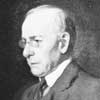 |
7. Louis Henry Sullivan / Condict Building (Later Bayard Building), Louis Sullivan, 1897-1899.
65 Bleeker Street, between Broadway and Lafayette Streets, opposite Crosby Street .
Louis Henri Sullivan (September 4, 1856 - April 14, 1924) was an American architect, and has been called the "father of modernism." He is considered by many as the creator of the modern skyscraper, was an influential architect and critic of the Chicago School, was a mentor to Frank Lloyd Wright, and an inspiration to architects of the Prairie School. The Condict Building is his only building in NYC.
|
 |
8. Robert A. M. Stern / Superior Ink Condominiums, Robert A. M. Stern, 2009.
West Street between Bethune and West 12th Streets.
Robert Arthur Morton Stern, usually credited as Robert A. M. Stern, (born May 23, 1939) is an American architect and Dean of the Yale University School of Architecture. His work is generally classified as postmodern, though a more useful classification would be a particular emphasis on context and the continuity of traditions. He may have been the first architect to use the term "postmodernism", but more recently he has used the phrase "modern traditionalist" to describe his work.
|
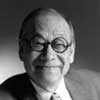 |
9. I. M. Pei / University Village, I. M. Pei & Partners, 1966.
100 and 110 Bleeker Street, and 505 LaGuardia Place.
Ieoh Ming Pei (b. April 26, 1917), commonly known by his initials I. M. Pei, is a Pritzker Prize-winning Chinese-born American architect, known as the last master of high modernist architecture. He works with the abstract form, using stone, concrete, glass, and steel. Pei is perhaps one of the most successful Asian architects of the 20th century, with his works built all over the world.
|
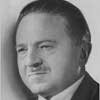 |
10. Ely Jacques Kahn / 100 Avenue of the Americas (Originally Green Sixth Avenue), 1928.
100 Avenue of the Americas, from Watts to Thompson Streets.
Ely Jacques Kahn (1884 - 1972) was an American commercial architect most active in New York City between 1925 and 1931. Kahn was born in New York, the only son of a prosperous Austrian and French Jewish family. He attended Columbia University. Kahn was the father of noted New Yorker magazine writer Ely Jacques Kahn, Jr.. Author Ayn Rand worked in Kahn's office as research for The Fountainhead.
|
 |
11. Stanford White / Judson Memorial Babtist Church, McKim, Mead and White, 1888-1893.
54-57 Washington Square South, Southwest corner of Thompson St.
Stanford White (November 9, 1853 - June 25, 1906) an American architect and partner in the architectural firm of McKim, Mead, and White, the frontrunner among Beaux-Arts firms. He designed a long series of houses for the rich and the very rich, and various public, institutional, and religious buildings. His design principles embodied the "American Renaissance". In 1906 White was murdered by millionaire Harry K. Thaw, leading to a widely-reported trial.
|
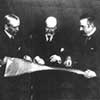 |
12. McKim, Mead, and White / Judson Hall and Tower, McKim, Mead, and White, 1877.
51-54 Washington Square South
William Rutherford Mead (1846-1928) studied at Amherst College, then joined the office of Russell Sturgis in New York City. He studied independently in Florence, Italy, before joining McKim's firm.
|
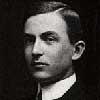 |
13. Raymond Hood / Bleeker Street Playhouse (now a drugstore /&cardshop), Raymond Hood 1920.
146 Bleecker Street, between Laguardia and Thompson Streets.
Raymond M. Hood (March 29, 1881 - August 14, 1934) was an early-mid twentieth century architect who worked in the Art Deco style. He was born in Pawtucket, Rhode Island, educated at Brown University, MIT, and the Ecole des Beaux-Arts in Paris. At the latter institution he met John Mead Howells, with whom Hood later partnered. Hood frequently employed architectural sculptor Rene Paul Chambellan both to create sculpture for his building and to make plasticine models of his projects.
|
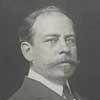 |
14. John Merven Carrere / 88 and 90 Grove Street, Carrere and Hastings, 1827, altered 1860s &1893.
Carrere and Hastings, the firm of John Merven Carrere (November 9, 1858 - March 1, 1911) and Thomas Hastings (March 11, 1860 - October 23, 1929), located in New York City, was one of the outstanding Beaux-Arts architecture firms in the United States. The partnership operated from 1885 until 1911, when Carrere was killed in an accident.
|
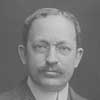 |
Thomas Hastings (of Carrere and Hastings indicated above)
Thomas S. Hastings (March 11, 1860 - October 23, 1929), was born in New York City on March 11, 1860. Thomas Hastings continued on his own after Carrere's death, until his own death in 1929. The firm's founders studied at the Ecole des Beaux-Arts and worked at the firm of McKim, Mead, and White before they established their own partnership.
|
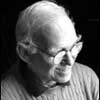 |
15. James Stewart Polshek / Washington Court, James Stewart Polshek Partners, 1986
360-374 Avenue of the Americas, between Waverly and Washington Places.
James Stewart Polshek (born 1930, Akron, Ohio) is an American architect based in New York City. He is founder and senior design counsel of Polshek Partnership architects. Polshek worked for I.M. Pei prior to starting his own firm, James Stewart Polshek Architect, in 1963. He is presently retired and maintains the title of Senior Design Counsel at the Polshek Partnership.
|
 |
16. Joseph Urban / The New School for Social Research, 1930.
66 West 12th Street, between 5th and 6th avenues.
Joseph Urban (May 26, 1872 - July 10, 1933) Born in Vienna, Austria, died in New York City, trained as an architect, known also for his theatrical design and his early illustrations of children's books. Immigrated to the United States in 1912 to become the art director of the Boston Opera House. Two years later he moved to New York where he designed productions for the Ziegfeld Follies and the Metropolitan Opera.
|
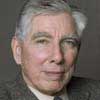 |
17. Hugh Hardy / Townhouse, Hardy Holzman Pfeiffer, Renovated 1978.
8 West 11th Street
Hugh Hardy was born in Majorca, Spain in 1932 of American parents. He graduated from Princeton University with a Bachelor of Architecture and with an Master of Fine Arts. After serving with the engineering corps of the United States Navy, he worked as the Architectural Assistant to Jo Mielziner in New York. Since 1967 he has worked in partnership with Norman Pfeiffer and Malcolm Holzman as Hardy Holzman Pfeiffer Associates (HHPA).
|
|
18. Willoughby James Edbrooke / The Archives, William Martin Aiken, James Knox Taylor, 1892-1899.
666 Greenwich Street, between Christopher and Barrow Streets to Washington Street.
Willoughby James Edbrooke (Evanston, Illinois 1843 - 1896) was an American architect and bureaucrat who remained faithful to a Richardsonian Romanesque style into the era of Beaux-Arts architecture in the United States, supported by commissions from conservative federal and state governments that were spurred by his stint in 1891-92 as Supervising Architect of the U.S. Treasury Department. |
|
19. Ernest Flagg / The "Little" Singer Building, Ernest Flagg, 1902-1904
561 Broadway, Between Prince and Spring Streets
Ernest Flagg (February 6, 1857 - April 10, 1947) was a noted American architect in the Beaux-Arts style. Flagg was born in Brooklyn, New York, studied at the Ecole des Beaux-Arts in Paris, and began his architectural practice in 1891 in New York. His contributions to zoning and height regulations were essential to New York's first laws governing this aspect of the city's architecture. |
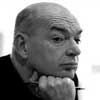 |
Jean Nouvel / 40 Mercer Condominium, Atelier Jean Nouvel and Andre Balaz, 2007
40 Mercer
Jean Nouvel (born 12 August 1945) is a French architect. Nouvel studied at the Ecole des Beaux-Arts in Paris and was a founding member of Mars 1976 and Syndicat de l'Architecture. He has obtained a number of prestigious distinctions over the course of his career, including the Aga Khan Award for Architecture (technically, the prize was awarded for the Institut du Monde Arabe which Nouvel designed), the Wolf Prize in Arts in 2005 and the Pritzker Prize in 2008.
|
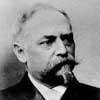 |
Richard Morris Hunt / Roosevelt Building, Richard Morris Hunt, 1873
480 Broadway, Between Broome and Spring.
Richard Morris Hunt (October 31, 1827-July 31, 1895) was a preeminent figure in the history of American architecture. Following the early death of his father, Hunt's mother took the family to Europe, where they remained for more than a decade, first in Switzerland and later in Paris. In 1846 Hunt was the first American architect to attend the Ecole des Beaux-Arts in Paris, and was regarded well enough to supervise work on the Louvre under Napoleon III. After his return in 1855, he founded the first American architectural school at his Tenth Street Studio Building (beginning with only four students), co-founded the American Institute of Architects and from 1888 to 1891 served as the Institute's third president, brought the first apartment building to Manhattan in a burst of scandal, and set a new ostentatious style of grand houses for the social elite and the eccentric, competitive new millionaires of the Gilded Age.
|
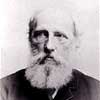 |
James Renwick, Jr. / 34 Howard Street, Renwick & Sands, 1868.
James Renwick, Jr. (b. November 11, 1818, Bloomingdale, New York - d. June 23, 1895, New York City, United States), was an American architect in the 19th-century. The Encyclopedia of American Architecture calls him "one of the most successful American architects of his time." Famous for building numerous structures including St. Patrick's Cathedral in New York City and the Smithsonian in Washington D.C. |
|
|
|
